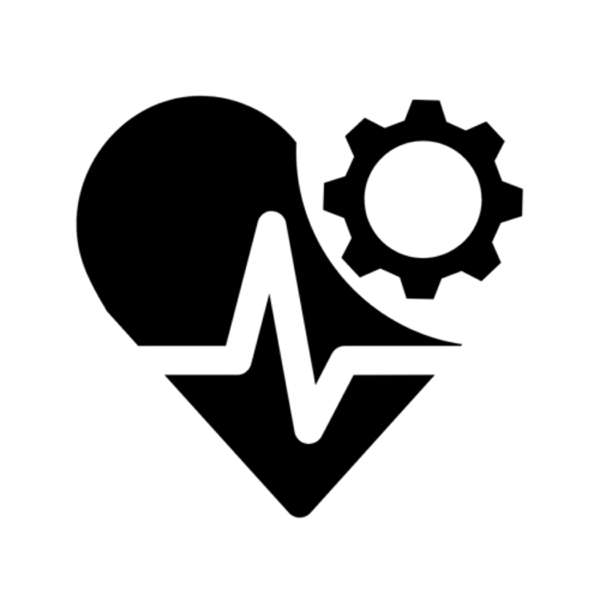In this weeks episode our two special guests Teri Scafidi and Sara Savio join our co-hosts Tom Dorsey and Frank Scandura III to talk about workflow management inside a Digital Shop.
Teri and Sara are going to share valuable insights about how they implemented a digital workflow inside their shops, what challenges they faced with the transition from paper to digital, and how you can avoid that and save yourself a bunch of time and future headaches.
Transcript of Recording:
Tom Dorsey: 00:01
Hello and welcome to this week’s edition of the Digital Shop Talk Radio. It’s Wednesday, February 13th 2019, my name is Tom Dorsey and I’d like to welcome my special guest co-host Frank Scandura III. Frank, say hi.
Frank Scandura III: 00:18
Good morning from Las Vegas. Hi, everybody.
Tom Dorsey: 00:21
Good morning from Las Vegas. And we are really thrilled to welcome our two special guests today. You know, women… dynamic women in the industry, leaders in the industry; Teri Scafidi from Eastside Bavarian. Hi, Teri.
Teri Scafidi: 00:39
Good morning.
Tom Dorsey: 00:41
And Sara Savio from Sac specialty.
Sara Savio: 00:44
Good morning.
Tom Dorsey: 00:45
Welcome Sara, good morning. We’re really excited to have you on because today’s topic we’re going to be talking about workflow management. And the three shops that we have represented here today have really done a fantastic job of implementing the workflow management tool from Auto Vitals into their business.
And you know really the objective for today is to talk about why they did it, how they did it, and what the benefits of implementing that workflow management and it… Really, what I want you to take away today is an understanding of how that workflow management steps implemented into your shops can benefit you and at least get you started on the path towards implementation.
If you’ve been struggling to implement, this is going to be the show for you because you’ve got three people in here that have taken it really to the next level. So, I don’t want to bogart all of the time let’s get to the experts but if you want to ask questions we’re live streaming to Facebook, go ahead and chat in your questions there, we’ll answer them live on the air and don’t be shy. So, let’s get it kicked off.
Frank if you want to kind of give us a background on what you’ve done with your workflow management in your shop and why it was important to you to have a tool like the Auto Vitals workflow management.
Frank Scandura III: 02:14
Sure. So, for us before we were paperless, hundred percent paperless with Auto Vitals, we had a rack system and a lot of people may be familiar with it where you had a rack for new work going into the shop, each technician had a rack for the work assigned to him, there was a rack for parts needed, there was a rack for waiting for authorization, there was a rack for everything, there was paper all over the place.
So, when we switched to Auto Vitals and no longer had those racks, we had to imagine now what are we doing in place of it, and then I looked at each column as a repair order, and had to look at it, that’s my paper repair order but it’s on the screen now. So, what I did was I basically duplicated all of my racks in my workflow steps.
So, take for example, I think we start with five basic workflow steps in Auto Vitals, because a lot of places like you said, (03:02) leave them all in one column, probably just have a bunch of paper piled up and they were constantly trying to figure out what’s next and who’s doing what and where does this go. So…
Tom Dorsey: 03:12
And they’re doing duplicate work, right? Because I think a lot of people have, you know, the (03:16) in the digital inspection but they’re still printing paperwork, they’re still hanging clipboards, they’re still shuffling paperwork around, and now you’re running around with the clipboard and a tablet in your hand instead of consolidating and becoming more efficient.
Frank Scandura III: 03:29
Yes. And that’s the whole point of, what did I used to do with a piece of paper, how am I going to do that digitally now? And that’s what we did. So, we created, in our waiting for inspection was cars getting dropped off and then once it was inspected we moved over to build estimate, and because I have a separate parts department then I moved the title over to need parts at it. So, he has a screen, a TVP; (03:52) vehicle page with what he needs to see.
So, as soon as he sees the title populated, he’s on it; he doesn’t have to wait for somebody to say, I need these parts. Then he moves it to waiting for approval. So, once the service advisor sees it’s there, then he knows, call the customer and then (04:08) then it get it moved over to needs parts order, then it’s waiting for parts, then it’s waiting for work finished, quality control, car wash and pick up. So, I’ve got a step for every single person and in the building.
What was hard for a while was integrating my quality control workflow steps and my car wash workflow steps until I got over my own cheapskates, that’s the real word. I bought tablets for everybody, right?
Tom Dorsey: 04:37
Also for like Porter’s.
Frank Scandura III: 04:39
What’s that?
Tom Dorsey: 04:40
For like a porter role. So you got (04:42) the parking lot, you just work up… Yeah! And I know, you know, I know shops that give tablets to their shuttle drivers and their… So, you know, if you got a tow truck, you got a tablet in it and now you can dispatch on the road and track where they’re at. Teri you’re…. you know, I was looking at your workflow the other day and it’s pretty awesome, it’s really detailed out. How did you come to that workflow and what’s the benefits for you in how you have your workflow setup?
Teri Scafidi: 05:11
Sure. Thanks for asking. You know, we… I was looking back to see how long we’ve been with Auto Vitals, that’s always has been a question for folks and this month will be our five year anniversary. So, we came on, very similar to Frank’s set up, a lot of paper, we were actually doing anything… Frank hadn’t talked about this before, we were actually taking pictures like Frank wasn’t, having… we had discs for customers for all the pictures we took and we were like (05:35) something else, so we were very, very fortunate to find you guys.
Well, you know, my background is HR Compliance, so outside of this before helping my husband with the shop, I was in charge of a lot of operations. So, for me, you know, setting expectations, understanding workflow processes, continuous quality improvement, having people invested in that are really… is really, really critical.
So, we were kind of fumbling along with some things for a while, growing as Auto Vitals is growing, in about two, two and a half years ago, I decided that, you know, after having some of that correspondence and that weekly meetings that we were doing with our teams, would like team 25 and team 29 with Auto Vitals, I put together a workflow process that was detailed and everybody knew the areas that they were responsible for and the expectations.
So, and I think I’ve shared it with Cheney, a couple other people have (06:31) and Chris and Nick, and I’m happy to share that with anybody. We took… morning we actually closed, we closed the morning, we didn’t open for, you know, about an hour and a half after we normally open and we had every single person on the team in a team meeting and we went through; I had workbooks made out for everybody, everybody understood the process, they have their tablets with them as well as, we had our desktops up there and we walked through and made sure everybody understood what they’re responsible for, why they’re responsible for it and they had a base understanding of what each component was in that workflow.
So, pretty detailed but it really set the stage for people to understand why we’re doing what we’re doing and why it’s so important, whether you’re… you know, like Frank was saying, we have a dedicated parts department, in our big workflow on the TVP you’ll see pull parts, but he actually has his own workflow behind the scenes, his own TVP…
Tom Dorsey: 07:29
Yeah!
Teri Scafidi: 07:29
It tells you exactly where he’s ordered the parts from. So, he’s got a yet another workflow so that everyone can see, oh! This parts are coming from I.M.C, or they’re coming from WORLDPAC, or they’re coming from Bellevue BMW, wherever they’re coming from. So, the folks can know at any given point in time, they can know exactly what’s going on with their car, the people within the organization, where things are at and they don’t have to run off and ask somebody.
It’s all right there in front of them. And then they also know like Frank was saying, oh! It’s in creating ethics and creating estimate, guess what? The inspections done, it’s time for me to create that estimate, send this off to the customer, make the time to make sure that we call them to follow up if they haven’t already called us to discuss what we found on their car. So, really setting the expectations for us with our team was a big turning point.
Tom Dorsey: 08:16
So, you know and that’s a great point Teri because… you know, what Teri is saying is that because of the way the workflow management tool is so flexible, you can… you know, it’s how to eat an elephant one bite at a time and so if you have a big complex process or something that you can’t really, you know, you’re struggling to overcome the challenges and the hurdles that are in that process, break it down and start to specialize.
And so she has a workflow specifically for a role, it might only have one or two steps in it, you know, check the vehicle in and hang a sticker or whatever. But if it helps to compartmentalize the process then the process becomes more manageable, and if it’s more manageable, it’s going to become more efficient. And so really look at your process from that perspective to see where you can specialize and break down that workflow to make: a) your staff understand their responsibilities better and then execute better, and for you really get a big picture of how everything’s working together so that you can find bottlenecks in that process and then continue to refine and work to improve. So Teri let me ask you, once you implemented that workflow, what did… what were the results? What benefits did you achieve?
Teri Scafidi: 09:42
It’s just like with any learning curve, you know, took a couple people a little bit longer, you know, they have learned at their own pace but we continue to have meetings every week, it’s not as much every week now but probably every other week. We do tips and tricks at every meeting for the technicians on things that they discovered, whether it’s within Auto Vitals itself or even how better to use our iPad.
All of our technicians not only do they have their pads but they actually have a desktop, so it’s helpful for them, sometimes it’s easier for them to sit at their at their station and type stuff but then they can also look at their big TVP and get a bit of a bigger picture. So, we just continue you know, it’s drip, drip, drip, as far as education is concerned, and we just continue to learn together and attending these things, you know, attending the conference, learning from that, bringing back that information, getting our foreman involved, getting our service advisors involved, whether that’s being able to listen to the shop talks or listening to the audio.
So, I think it’s… I really enjoy having the meetings that we have because I think it’s an opportunity for us to share as well and to learn without having to stumble through the whole thing on our own. So…
Tom Dorsey: 10:38
Well, definitely that’s great. Help each other help each other. It’s awesome. (10:44) but like you said, its constant learning process because, you know, hey! We take some information and try to build a solution and then get input from the shops and then just continually to tweak it so that we can get better. I mean, it’s like with our pro sports teams are going to, you know, reach that championship level, it’s always, you know, measure and then refine. And we really, you know, appreciate, we’re blessed to have, you know, folks like you that are contributing and giving us feedback all the time. You know, Sara, you’ve had the pleasure of implementing Auto Vitals into shops, right?
Sara Savio: 11:18
Yes.
Tom Dorsey: 11:19
And did you find yourself going in and creating the workflows for them, the digital workflows or did you find yourself incorporating their workflow into the… into Auto Vitals?
Sara Savio: 11:31
Done about a little bit of both. The nice thing about the Auto Vitals system is that you can consistently change it and to… you know, as you want to change your workflow you find that you need something else, you know, that there’s something else you want to measure, there’s another step you want to take, it’s so easy to go in and, you know, just set that new workflow step up.
What I really liked most about the system and where I find it helps us the most is when we started integrating the work step, workflow notifications (12:06). So, by setting those expectations, you know, we’re able to set our workflow up so that we’re not setting ourselves up to fail, the customer is receiving the inspection when we want them to receive it and then we know that we have ample time, you know, to allow for that phone call back if they haven’t called us within 20 minutes.
We’re finding, you know, by setting the expectation and then following up we can see that they’ve been opening the… opening up the inspections, looking at the pictures, how much time it’s taken that it really has a big impact on how the rest of our workflow goes, and that has been extremely beneficial for the shop,
Tom Dorsey: 12:49
Yeah! That’s fantastic. You know, and so you have mentioned, you know, about going in there and setting up your automatic notifications, so can you, you know kind of tell the listeners a little bit about once you establish those automatic notifications, what benefits did you notice? I mean, did you find yourself getting more free time at the counter? Because a lot of that stuffs getting done for you and then how were you able to apply that free time if any existed? I don’t want to put words in your mouth but, what did it end up turning around, I mean from an efficiency perspective for you at the counter?
Sara Savio: 13:25
Sure. So, the… You know, the expectation at drop off is, you’re going to receive, you know, the notification once the technician is complete with the testing and the inspection, at that point go ahead and click on the link, take a look at the pictures and all of the notes. I mean at that point you’ll know that we’re working on pricing and options, and then really bringing it home with them once you receive that notification, take a look and they need to very much buy into that.
And then the next step is that once we have pricing and options ready for you, you’re going to receive the next workflow notification that says, call Sara for pricing and options. So, at that point I know, you know, that I sent it correctly; we have the time for the customer. What it helps to do, it prevents those phone calls in-between.
If you have those long diagnostics or, you know, you’ve got a busy day, you definitely want to make your status calls but as far as setting the expectation we’re just getting less calls, you know, coming in, do we have any answers? What’s going on? We’re managing our time as opposed to being reactive and having to deal, you know, a… it’s just the expectation and everybody understands it.
Tom Dorsey: 14:41
So, what would you say is the big… Like if you had to give advice to folks that aren’t using the notifications in their workflow, what would you say is the biggest thing that they’re missing out on?
Sara Savio: 14:53
The biggest thing I think that you’re missing out on is that opportunity to, you know, express once again, and we’ll keep drilling this in, set the expectation so it works in your schedule. If you know you’ve got four estimates ready, you can spread out when you’re sending those inspections so that you know you’re going to be ready for that customer in 20 minutes, for that phone call. So you don’t have to let the customer drive your process. By setting those workflow steps and notifying the customer, you’re going to find that you’re driving the process the way it works for you.
Tom Dorsey: 15:30
Man that’s super smart. Teri would you agree? Are you using the workflow notifications?
Teri Scafidi: 15:34
Absolutely! I totally agree with Sara. We only use two notifications, one on waiting for approval after we’ve built that estimate and then ready for pickup. But Sara is spot on, its setting the expectation, you driving rather than being reactive. And then, you know, because we all know… we’ve been there when the customers are calling every hour sometimes and, you know, the frustration and… on our side and it’s completely avoidable, and it’s completely within our control. So, I think Sara is spot on.
Frank Scandura III: 16:10
That’s good too. And Teri said something that was really profound too, by having those additional workflow steps internally; it prevents people from her running around the building…
Tom Dorsey: 16:19
Yeah!
Frank Scandura III: 16:19
…Asking, what’s going on? What’s this? Who’s doing this? Who’s doing that? And then (16:23) because I say all the time that those are the interrupters, and when my process is interrupted I don’t get to complete what I’m doing, I’m going to forget something or leave something out and it’s the same thing for the text, right?
I want my advisors to have a relationship with the technicians but if I find them running out to the back to ask them what’s going on with the car, I’ve got a problem. So they shouldn’t be doing that, they should all be communicated digitally. Something else too, because we always talk about modifying, customizing, tweaking and making it perfect, right?
So if you think about making small incremental changes, no matter what, so business, our lives, whatever it is, and you do enough small changes, you get a greater trajectory towards improvement. We can’t go from high school football to NFL in 24 hours but if you make those small changes and those commitments to improve and set your target where you want to be you’ll make it.
So everybody needs to keep that in mind. This is not a, okay, this is how we’re going to do it; it’s got to be communicated like Teri did. Closing your shop is a brilliant way to do that. We have meetings everyday at… sometimes are short and brief and quick, and sometimes are a little longer because, you know, the topics are deep. But we have to communicate what’s not working so we can make it work.
And I’ll tell you a story, right? Full disclosure, I had a technician saying that he’s frustrated and don’t think anything’s ever going to change, here is my notes. I’m like, No, I’m not accepting this, we’re going to… I said number one I’m not going to let you quit. Number two, we’re going to fight through this because if you quit now, you’re just going to quit at every turn in your life that things get tough.
So, you’re going to learn how to fight through this, so we recovered that relationship and learned a couple of things that he’d been communicating in the building but never got to me. So, it’s all about communication, what’s not working? How do we make it work? Little changes make a big difference.
Tom Dorsey: 18:22
Yeah! That’s a great point Frankie because it’s really important to get the feedback from the staff, you know, they’re the ones are going to give you the insight, maybe you don’t see the big picture and they can help you to build, you know, steps or, you know, protocols that… because you know what, they want to do a great job and if you know what’s expected of you, then you feel confident and motivated and happy and you deliver good work.
But if everything is confusing, you run around and you get de-motivated and then you start to get sloppy and you burn out and, you know, looking for a way to get out of there. So, how do you see… So, do you see that in your workflow management? Do you see the ability for them to understand the process better and to be more in control of that process? Is there a result in the quality of the work, in the efficiencies and productivity of your technicians?
Frank Scandura III: 19:16
Absolutely enormous! Just being able to know what’s going on with a vehicle glancing at my screen changes everything. It… that’s really amazing. Because in old days, you know, is it in this rack? Is it in that rack? Is it in this rack? And then, you know, asking 17 people the same question to get the… It’s ridiculous to do it that way. When you really think about it going back to paper is ridiculous to just even try to imagine. And just sitting here, I mean, I’m taking note, right? So, I’m writing my notes out. I’m learning from you guys that… I think my shuttle driver is about to get a tablet.
Tom Dorsey: 19:53
Yeah!
Frank Scandura III: 19:53
(19:43) on there, we’re going to assign a ride to him on the tablet; he’s going to get a notification and he’s going to know what customer needs a ride. You know, it be pickup or drop off and then he’ll put on his workflow step that he’s doing it, nobody will have that question where he is anymore. So, you know, the little changes, right? The little…
Tom Dorsey: 20:08
My Man!
Frank Scandura III: 20:09
You know, a little nugget here, a little nugget there, pretty soon I’ll be able to do this from the beach.
Tom Dorsey: 20:15
That’s the ultimate goal, right? (20:17) Ron Haugen’s got that locked up if you saw last week’s episode.
Frank Scandura III: 20:22
I saw that, yes.
Tom Dorsey: 20:24
He figured it out, lucky guy.
Frank Scandura III: 20:29
Yeah!! We lost Teri.
Tom Dorsey: 20:31
Oh, oh! She had a customer. Because that’s what happens when you’re an Auto Vital shop, you get lots of customers, so you’ll be busy. Good. So, you know… Again I just kind of want to go back to, you know, advice if you can for the guys who are just ignoring or they’re just using the basic workflow steps, right? The five basic workflow steps and it’s just kind of, aah! I got to move the thing or shoot I forgot to move the thing.
Why should they want to move the thing? Why should they want to be managing those vehicles and have, you know, a robust… I’ll put it that way. It doesn’t have to be, you know, down to, you know, 400 workflow steps but why should they have a more robust workflow than the five basics? And, you know, open it up, you guys just jump in, don’t be shy.
Sara Savio: 21:20
I think it.. The… When you have more workflow steps, the common goal for any shop I believe it should be is, you know, we want to get the vehicles in, we want to take care of our customers, we want to make sure that it’s done right, we want to make sure that it’s, you know, that quality control is done and then we want to have time to prepare for the exit appointment.
We want to have that time to schedule the exit appointment and then we want to know that we are, you know, informing the customer that it’s ready to pick up. So, you know, with the goal that we’re not going to have 10 customers sitting at the lobby all at five o’clock to pick up all at the same time.
So, all of these things are, you know, to a certain degree very manageable, you can’t always manage when somebody is going to get off work or if they can leave early but by following, you know, the individual workflow steps, your chance of having your day become much more manageable and a lot less chaotic, that’s what all of this does.
Frank Scandura III: 22:25
And it’s for everybody to know what’s going on at a glance, right? even if you have just one column. I told… and I told my techs…
Tom Dorsey: 22:32
Yep.
Frank Scandura III: 22:32
Here’s a column of cars that are not assigned for whatever reason, if they’re not assigned to anybody else, if you need work just look there.
Tom Dorsey: 22:38
Yeah! Yep.
Frank Scandura III: 22:39
Because service advisors, right? We all know they get busy running around with their heads on fire and may forget to assign a car. So don’t wait for someone else, take a glance. So, there’s reasons that this just helps everybody know what’s going on. And I’ve often said that, you know, sometimes technicians need to spend a few hours up front just to see what really goes on up front because they have no clue. They think it’s just like a cakewalk (23:03).
Tom Dorsey: 23:04
Yes. We are having coffee.
Frank Scandura III: 23:06
Take an occasional phone call, what an easy life. Well, there’s a lot more to it. So, and then as many workflow steps as you need from whatever you are used to doing, right? When I was training I told people, whatever you did with paper, create a workflow step for them. That easy! Whatever you did with paper, create a workflow step.
Tom Dorsey: 23:27
Exactly!
Frank Scandura III: 23:28
And that’s how you really truly transition into the digital realm.
Tom Dorsey: 23:36
Start to map it out.
Frank Scandura III: 23:38
Precisely!
Tom Dorsey: 23:39
And, yeah! And that’s great. You know, because tomorrow’s webinar with (23:42), the Digital Shop Talk Webinar is 10am pacific time, check your inbox because, you know, if you’re subscribed then you’ll get the notification but that’s really going to be, you know, taking this discussion that we’re having and then putting it into practice and getting it in there and showing how to do the setup and the implementation.
And so if you’re looking at, you know, ideas just like Frank said, if you’re looking at ideas or, you know, you’ve been wanting to maybe try something out, get in there and ask questions and learn that information, reach out to these folks on Facebook because they’re going to help you out. And, you know, like I said is just, you know, baby steps, one bite at a time.
Frank what would you say, you know… If I’m just using the five basic workflow steps, what workflow steps do you think that I should be considering? What… let’s say, top two workflow steps should I be considering adding to my workflow?
Frank Scandura III: 25:24
I think… Sometimes, you know, depending on how many people are there but let’s say something like, customers bank called waiting to hear back might be one that you could create, especially if you do it a lot of overlap work, right? So my guys concentrate on their own customers for the most part, but they know when they’re expected to call back. Parts, you know, waiting for parts is a huge….
Tom Dorsey: 25:02
Yeah! Yeah!
Frank Scandura III: 25:04
Right? And this way what parts vendor shows up, I look at, hopefully you guys are using your, R.O (25:10), right? the purchase order number. This is, you know, R.O 25,100, bam 25,100, just move it over. And it’s really, you know, it is more than just clicking and dragging it over. There’s a number of ways to move it from one workflow step to the next, so it’s… shouldn’t be a big deal. It’s just… again, they’re taking those little incremental changes, they become muscle memory and have big results in the end.
Tom Dorsey: 25:36
Yeah! And then you get the timestamp delivery, right?
Frank Scandura III: 25:39
Yeah! Here’s another big one a lot of people forget; sublet, right?
Tom Dorsey: 25:43
Alright! Sure.
Frank Scandura III: 25:44
Even if it’s a virtual company coming into your parking lot, if you don’t have that workflow step you may lose track of that car. Hey! What’s going on is going to be a big question. So, if you have that workflow step everybody can see, hey! That’s over at sublet and, you know, you can even… If you do a lot of sublet work, you can create a workflow step for each type of sublet. So whatever you need to do just think about, how do I know what’s going on with this vehicle? What’s the best most practical way to do it? And create a workflow step for it. I think we’ve got a total of 12 workflow steps; we’re going to have 13 now after (26:17).
Tom Dorsey: 26:18
Yeah! Well, that’s great. I mean, that’s highly manageable. What about you Sara, what would you say would be your two top two that people should consider if they’re only using the five basic?
Sara Savio: 26:29
From an advisor standpoint, I would say the building estimate separate. So, and that’s where you’re sending the information to the customer and, you know, definitely citing that waiting for approval as when the customer gets the message, you’re ready for them to call you. And then the last one that I would suggest adding would be exit prep. That’s when you’re going into, you know, setting your next appointment using the CRM now features, your… you know that’s when you get everything ready; any handouts, whatever the case may be and, you know, scheduling everything out. And that’s going to be the best for retention.
Tom Dorsey: 27:15
Take that to the bank folks, that was genius advice right there. Because what Sara is saying is that you’re prep…you’re making sure each and every vehicle is prepped for delivery. No more embarrassments when the folks show up, no more forgetting to sign them up… get them set up for their reminders and service and start to schedule out the maintenance service reminders, instead of just blasting it all out there and hoping and praying. Really take the time to prep and then deliver, and I’m sure your customers appreciate that.
Sara Savio: 27:43
Absolutely!
Tom Dorsey: 27:46
It’s good stuff.
Frank Scandura III: 27:46
Good. Yep.
Tom Dorsey: 27:48
I’ll write that down. And you can always find Sara on the Facebook forums, so don’t be shy, just ping her and she just loves to help folks and she’ll help you. And so if you’re looking at… Again, if you’re looking at this, you’re missing out and this ain’t a new sales pitch because you’re already paying for it, right? Use it. Implement the workflow steps in your shop, start with like these ideas you just got; vehicle prep, the sublet stuff, you know, the waiting on parts is huge because you can start to timestamp, those of you guys are using the workflow correctly.
And now guess what you can do? You can start analyzing that data to look at vendor performance, to look at bottlenecks, to look at… you know, start to see that certain vendors take longer to get certain parts or whatever it might be, or certain makes and models in your area you’re struggling to find parts, find better solution, deliver faster service and you can just have a more efficient shop.
I think that this was a solid, you know, a solid show for folks that are considering it and looking to it and seeing it, you know, it’s like anything else. Baby steps, put it in place, measure it; if it’s working for you, fantastic, build on it from there, if it’s not working for you, you know, tweak it, ask some questions on Facebook, attend the webinars, attend the Digital Shop Talk Radio and get these folks to help you out and get that stuff working for you.
And it’s going to be a big benefit, and like Frank said, eventually you’ll find yourself sitting on a lounge chair on the beach and collecting cheques. So, guys I want to thank you very much for attending. We are up and out of time for this week’s episode of the Digital Shop Talk Radio. I want to, you know, thank our special guests, you know, who had to go make some money in the shop; Teri Scafidi, Sara Savio, thank you very much for coming in Sara, you are awesome as always and we really appreciate your insights because, you know, he’s a superstar.
And my co-host with the most this week, Frank Scandura III, thank you very much Frank; always appreciate your insights man, always appreciate everything you do in to help the industry and help folks that are going digital in their shop. Thanks again.
Frank Scandura III: 30:02
Nice talking to you guys, have a great day.
Sara Savio: 30:04
Thank you.
Tom Dorsey: 30:04
Thank you. Tune in next Wednesday, 10am Pacific, Facebook Live and next episode of Digital Shop Talk Radio. We’ll see you then.
****THE END

 Our TOPPODCAST Picks
Our TOPPODCAST Picks  Stay Connected
Stay Connected







